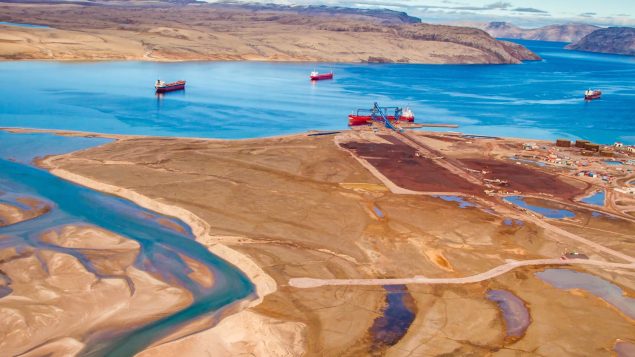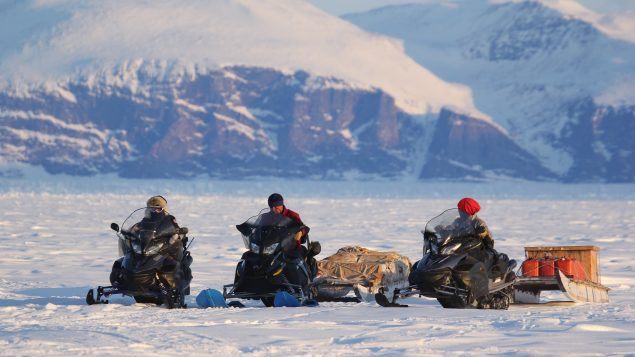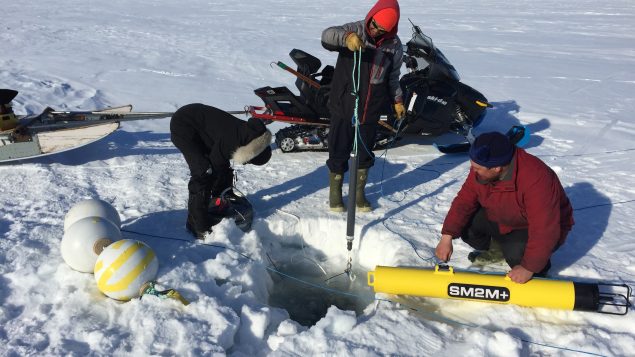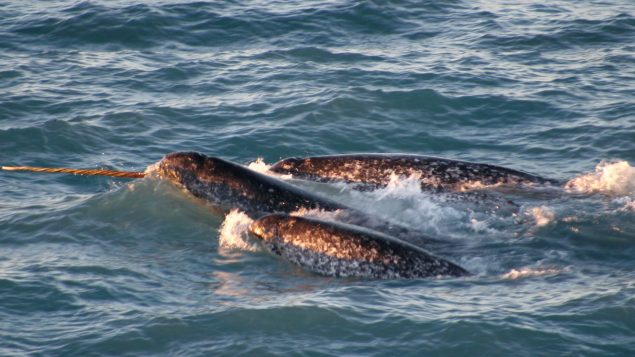A Canadian conservation group says more research into the impact of vessel traffic on narwhal and other marine life is needed before a regulator in the Arctic territory of Nunavut allows a mining company to expand its production at one of the world’s northernmost iron ore mines.
The Baffinland Iron Mines Corp., which operates the Mary River mine site on Baffin Island, is looking at expanding its production from nearly six million tonnes of iron ore a year currently to 12 million tonnes a year.
Baffinland, a joint venture between Nunavut Iron Ore and ArcelorMittal, would like to see its production rising to 30 million tonnes per year by 2025.
However, that would mean a significant increase in vessel traffic to ship iron ore from northeastern Baffin Island to steel producers in Europe and elsewhere.
According to marine conservation group Oceans North, bulk cargo vessels and supply ships used by Baffinland made nearly 150 trips last summer to resupply the mine and transport over five million tonnes of iron ore.

Iron ore from the Mary River mine operated by Baffinland is loaded onto bulk carrier ships during the ice-free summer season in July through September (Baffinland/Youtube)
If the territorial regulator approves Baffinland’s plans for increased production at the mine, that would more than double the vessel traffic in the area, which until recently saw very little shipping, said Kristin Westdal, marine biologist for Oceans North.
Speaking to Radio Canada International by phone from Vancouver, British Columbia, Westdal said there is simply not enough data to figure out how this increased traffic will affect the population of the iconic narwhal that summer in the area.
“We need to take a precautionary approach,” Westdal said.
“If we don’t know exactly what might happen with this increased with vessel traffic, we need to slow down a minute and really try and understand with the current vessel traffic what those effects are and then try to extrapolate into the future what that might look like.”
A monitoring project

Kristin Westdal (L), Alex Ootoowak (C) Jefferson Killiktee (R) return to base after a successful deployment of multiple hydrophones in Lancaster Sound region (Photo courtesy of Josh Jones)
A monitoring project launched by Oceans North before the mine began its operations shows that the noise produced by vessels overlaps with some of the frequencies used by narwhals for their communications and that these animals might be exposed to almost continuous vessel noise during the short summer shipping season, Westdal said.
(Listen to the interview with Kristin Westdal)
ListenThe project to monitor the impact of vessel traffic on marine life in the area began in 2014 because of concerns by the local hunters’ and trappers’ association in the Inuit community of Pond Inlet, in northeastern Baffin Island, Westdal said.
Narwhals, small Arctic whales with long spiralling tusks in males, are a key Arctic marine species and an important food source for local Inuit communities.
“At that time we weren’t sure when Baffinland was going to start doing any monitoring and if they were going to be able to get in there before the vessels actually started,” Westdal said. “We wanted to jump the gun and do some baseline monitoring before any of the large vessels showed up.”
The researchers wanted to get some basic data on the ambient noise levels and what effect ship noise was having on the narwhal that migrate through the area, she said.

Kristin Westdal, marine biologist with Oceans North Canada (L), Jefferson Killiktee (C) and Alex Ootoowak (R), local field technicians for Oceans North, deploy a hydrophone in Milne Inlet
(Photo by Josh Jones)
The team from Oceans North placed one hydrophone in Tremblay Sound where there wasn’t going to be any vessel traffic and another near Milne Inlet where bulk carriers and supply ships pass through on their way to and from the mine.
Over time, the team deployed additional and more sophisticated hydrophones at various locations in the region, Westdal said.
Oceans North researchers found that narwhals are communicating amongst each other more in Tremblay Sound, where there are no vessels, she said.
(listen to the audio recording of narwhals communicating with each other)
ListenNarwhals are very “chatty” animals that use sound for echolocation and to communicate with each other, Westdal said.
Another important finding is that narwhals are communicating at a much lower frequency than is often discussed in scientific literature, she said.
(listen to the audio recording of underwater noise produced by a bulk carrier vessel)
ListenAnd the particular frequency used by narwhals to socialize with each other overlaps with noise emitted by vessel traffic, Westdal said.
It is not clear how the narwhals will behave when exposed to additional noise, she said.
“This is no small interaction we’re talking about,” Westdal said. “We don’t know, will they leave the area? Will they arrive later? Will they leave earlier? What are the long-term consequences of reduced communications? These are huge questions that can’t be answered in a few years.”
Baffinland did not reply to Radio Canada International’s request for comment.







For reasons beyond our control, and for an undetermined period of time, our comment section is now closed. However, our social networks remain open to your contributions.